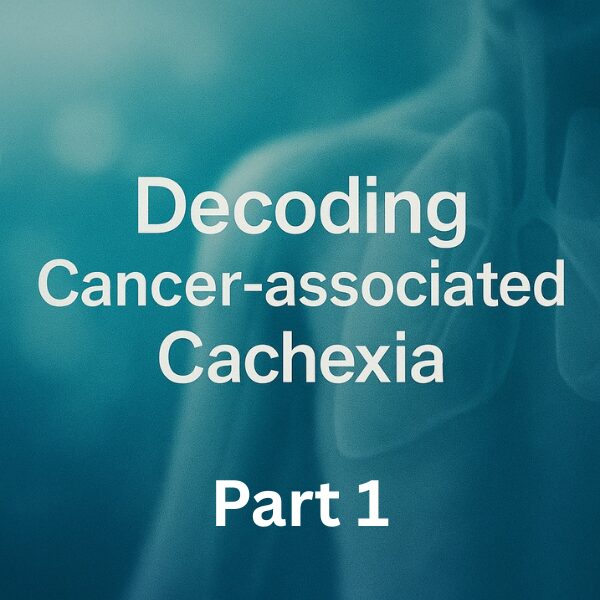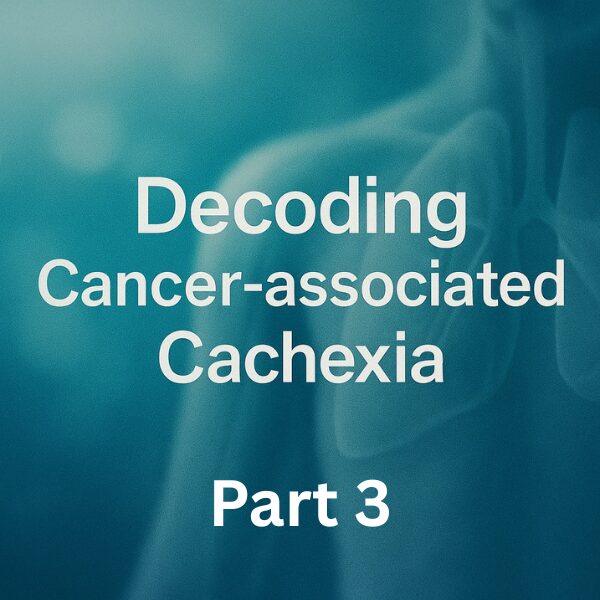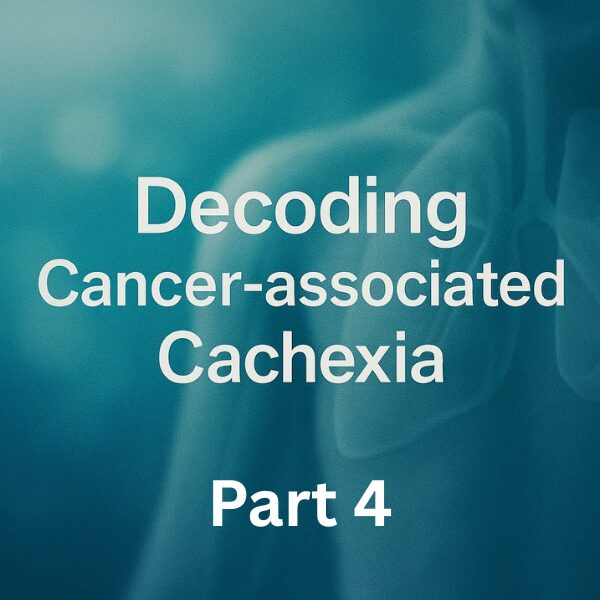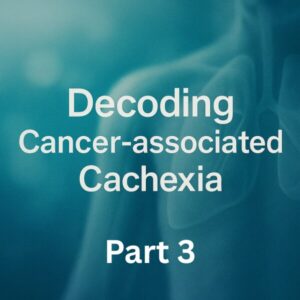What’s Next — GDF15 Blockade and the Era of Precise Phenotypes
Our finale focuses on near-future therapies and trial design. Beyond “weight,” we target phenotype × mechanism and build evidence that actually changes care.
3 takeaways
- Direct central drivers: GDF15/GFRAL blockade aims to relieve anorexia/nausea and reset intake.
- Select by phenotype + biomarkers: anorexia-dominant, inflammation-dominant, or metabolic-resistant groups.
- Composite endpoints: CT body composition + function (chair stands/stairs) + PROs (appetite/fatigue) + treatment deliverability.
1) Frontlines of next-gen agents
GDF15/GFRAL
- Goal: hit the anorexia/nausea source
- Best bet: fat-first phenotype for multi-domain gains
- Key: GDF15-high and low appetite scores for enrichment
Inflammation cytokines
- IL-1/IL-6/TNF modulation
- Promise in mixed/muscle-first with heavy fatigue
- Safety: infection/wound-healing profiles matter
Muscle/metabolic targets
- Anabolic and mitochondrial strategies
- Likely to shine with multi-modal packages
- Functional endpoints are critical
2) Precision phenotyping in practice
- Intake set: CT L3 composition + chair-stand/stairs + 0–10 appetite/fatigue.
- Biomarkers: GDF15, CRP/IL-6, albumin, leptin/adiponectin ratio, insulin sensitivity.
- Clusters: anorexia-dominant / inflammation-dominant / metabolic-resistant.
- Adaptation: refresh the dashboard every 2–4 weeks and switch gears if the phenotype shifts.
3) Trial design that moves the needle
- Composite primary endpoint: lean mass (CT) + function (chair stands/stairs) + PROs (appetite/fatigue).
- Treatment deliverability: keep relative dose intensity (RDI); fewer delays/reductions as key secondary outcomes.
- Enrichment: pre-specify GDF15-high & low appetite for anti-GDF15 trials.
- Standardize follow-up: harmonize CT protocols and home sensing.
- Minimal important differences: define MID for function and PROs in advance.
4) Home sensors × imaging × AI
- At-home function: chair-stand counts, steps, and HR recovery via phone/wearables.
- CT auto-segmentation: rapid SKM/SAT/VAT and radiodensity readouts.
- One-page dashboard: only three axes—composition, function, PROs—with a color-coded phenotype tag.
5) Ethics, operations, and access
- Lower burden: one-minute home logs; weekly PROs.
- Equity: lend devices; offer paper/phone options; readable multilingual materials.
- Safety rules: clear alerts for falls, hyperglycemia, edema, arrhythmia.
- Team workflow: oncology, nutrition, rehab, and palliative care in parallel lanes.
6) Tomorrow’s clinic (summary algorithm)
- Identify: phenotype now (fat-first/muscle-first/mixed) from CT + function + PROs.
- Assign: prioritize appetite, inflammation, or anabolism accordingly.
- Intervene: nutrition × exercise × symptom care + targeted agents when indicated.
- Re-check: 2–4 week composite review; switch gears fast.
My Perspective
The shortest path to approval is to find the right patients first and prove a meaningful composite gain. For anti-GDF15, think GDF15-high × low appetite × fat-first with a package of antiemetics and energy-dense nutrition—then win on CT + chair stands + appetite + RDI. In clinic, the victory is not a decimal on weight; it’s more hours of the day when patients can move. Measure that, grow that, and make it the evidence.
Edited by Morningglorysciences
Related Article














Comments